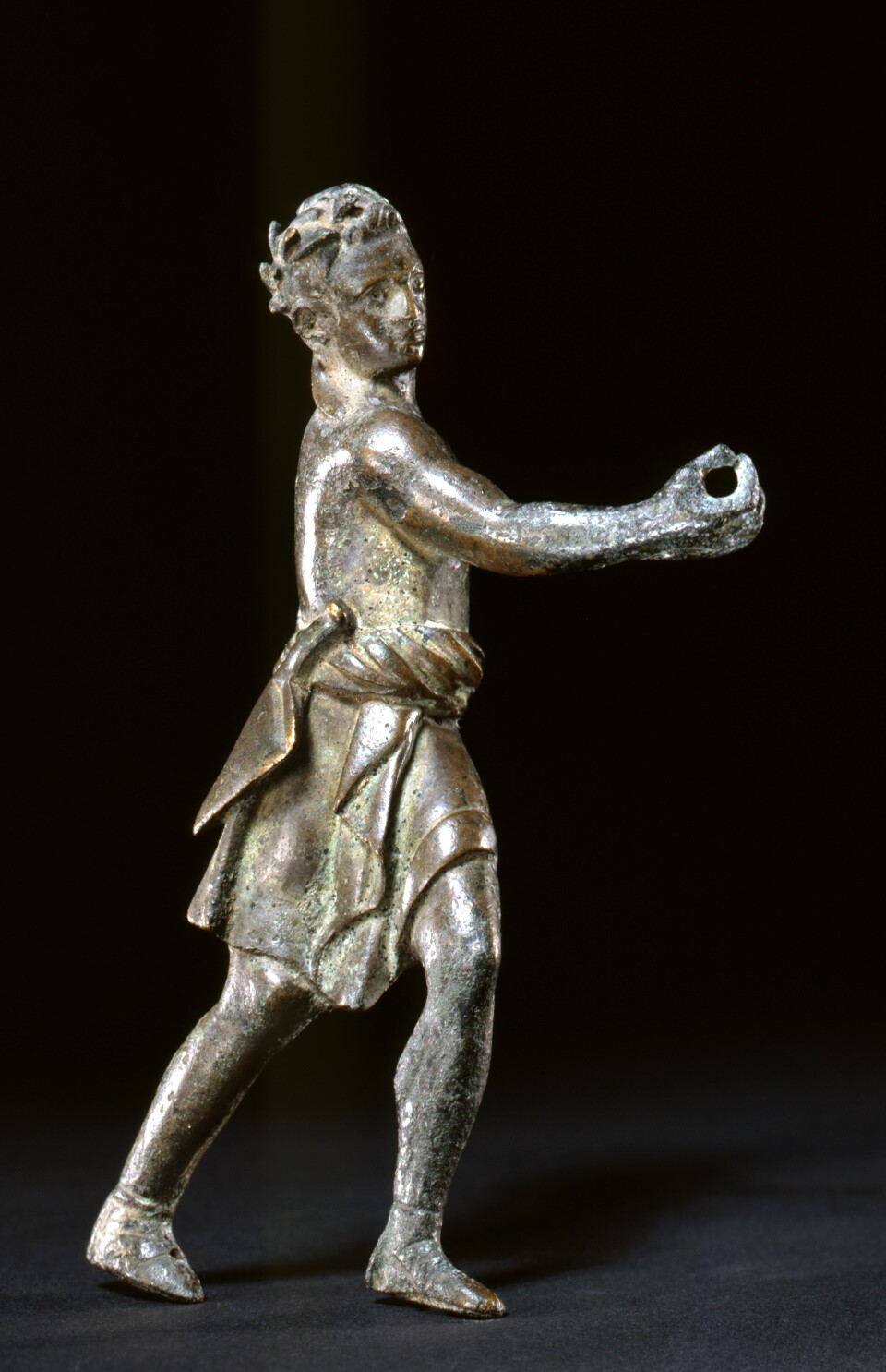For the religious rituals to run smoothly, subordinate batches were needed: working personnel whose task was to ensure that a rite ran smoothly, to bring in the sacrificial animal and to slaughter it.
The task of this sacrificial servant was to lead the bull to the place of sacrifice. He wears the typical costume for these sacrificial servants, the short apron (limus) held together at the waist, in the waistband of which is the triangular sacrificial knife, the culter. This knife was used to cut the carotid artery of the bull and later to open the abdominal wall. (AVS)
Former collection August Kestner, Rome
en

















